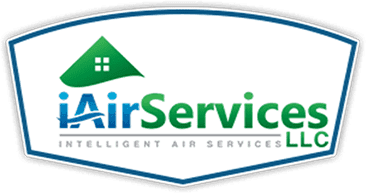Clearing the Air: Signs You Need Indoor Air Quality Services
Indoor air quality is a crucial aspect of maintaining a healthy and comfortable living environment.
Poor air quality can lead to various health issues, including:
- Allergies
- Asthma
- And other respiratory problems
In this blog post, we will discuss five common indoor air quality issues and provide tangible solutions to help you improve the air quality in your home.
By understanding these common problems and taking the necessary steps to address them, you can ensure that your home is a safe and comfortable space for you and your family.
1. EXCESSIVE DUST AND ALLERGENS
One of the most common indoor air quality issues is the presence of excessive dust and allergens in the air. This can be caused by a variety of factors, including poor ventilation, dirty air filters, and the presence of pets.
To address this issue, consider the following tips:
- Regularly clean and replace your air filters to ensure that they are effectively trapping dust and allergens.
- Invest in a high-quality air purifier with a HEPA filter to help remove allergens from the air.
- Regularly vacuum and dust your home to reduce the presence of dust and allergens on surfaces.
2. MOLD AND MILDEW
Mold and mildew can grow in damp, humid environments and can lead to a variety of health issues, including respiratory problems and allergies.
To prevent mold and mildew growth in your home, consider the following tips:
- Ensure proper ventilation in areas prone to moisture, such as bathrooms and kitchens.
- Use a dehumidifier to maintain appropriate humidity levels in your home.
- Regularly inspect your home for signs of mold and mildew and address any issues promptly.
3. VOLATILE ORGANIC COMPOUNDS (VOCS)
VOCs are chemicals released by various household products, such as cleaning supplies, paints, and building materials. Exposure to high levels of VOCs can lead to respiratory issues and other health problems.
To reduce VOC levels in your home, consider the following tips:
- Choose low-VOC or VOC-free products whenever possible.
- Ensure proper ventilation when using products that emit VOCs.
- Store chemicals and other VOC-emitting products in a well-ventilated area, away from living spaces.
4. CARBON MONOXIDE (CO)
Carbon monoxide is a colorless, odorless gas that can be deadly in high concentrations. It is produced by the incomplete combustion of fuels, such as gas, oil, and wood.
To protect your family from CO exposure, consider the following tips:
- Install CO detectors on every level of your home and near sleeping areas.
- Regularly inspect and maintain fuel-burning appliances, such as furnaces, water heaters, and fireplaces.
- Never use a gas stove or oven to heat your home, as this can lead to dangerous levels of CO.
5. POOR VENTILATION
Poor ventilation can contribute to a variety of indoor air quality issues, including the buildup of allergens, mold, and VOCs.
To improve ventilation in your home, consider the following tips:
- Ensure that your HVAC system is properly sized and functioning efficiently.
- Open windows and doors whenever possible to allow fresh air to circulate throughout your home.
- Consider installing an energy recovery ventilator (ERV) to improve indoor air quality without sacrificing energy efficiency.
If you’re concerned about your home’s indoor air quality, the professionals at Intelligent Air Services, LLC can help. Our team can identify and address common indoor air quality issues, ensuring that your home is a safe and comfortable space for you and your family.
Contact us today to learn more about our indoor air quality services and how we can help you breathe easier in your Austin, TX home.
